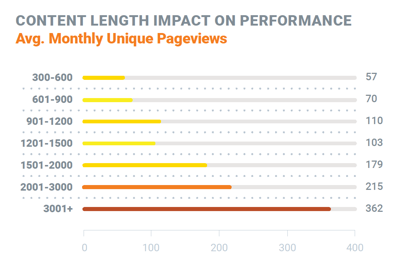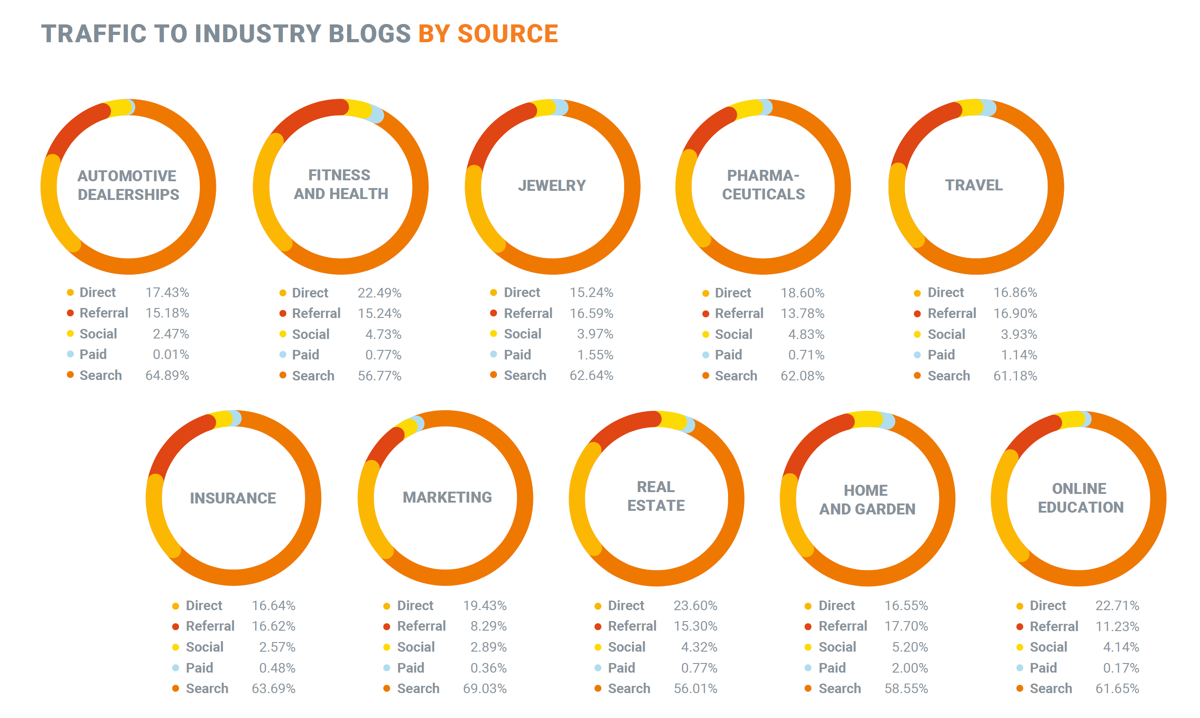Learn More About:
Content Marketing
Content marketing is one of the most talked about marketing and promotional strategies today -- and one of the most misunderstood. So, let’s start by clearing this up.
Content marketing is all about creating valuable free content of interest to a target audience and then distributing and promoting that content to attract and engage that audience through various online channels, including websites, social media, and email.
 The goal of content marketing is to develop new business from that target audience by providing valuable information that is useful to them. Done correctly, content marketing enables a business to establish a relationship with prospects that, over time, encourages them to become customers or clients, nurtured by more increasingly-focused content custom-tailored to each stage of the buyer’s journey.
The goal of content marketing is to develop new business from that target audience by providing valuable information that is useful to them. Done correctly, content marketing enables a business to establish a relationship with prospects that, over time, encourages them to become customers or clients, nurtured by more increasingly-focused content custom-tailored to each stage of the buyer’s journey.
Some marketers may be content with an online strategy that consists of posting periodically to a blog, sharing some links, and updating their organization’s social media status. However, in today’s dynamic online world, this haphazard approach falls woefully short. What’s needed is a focused, well-thought-out content marketing strategy that marries target audience and keyword research with compelling, relevant content that can attract the right prospects and convince them to open a dialog with your business or organization.
Search engine optimization (SEO) has been on every marketer’s radar screen for years, but the truth is, you can’t do effective SEO without relevant keywords, and you can’t determine relevant keywords without researching your prime target audience and their interests. Once you understand what motivates your audience you can develop a list of appropriate keywords that can populate the valuable content you’ll be creating.

Research has revealed that the primary source of traffic to a wide range of industry blogs is search. In fact, well over 50 percent of the blog traffic to a broad spectrum of industries – from pharmaceuticals to healthcare, home and garden products to real estate – come from organic search fueled by SEO and content marketing. The following analysis was done by SemRush in their recent State of Content Marketing report.

Content performance is key to the success of a content marketing strategy. So what elements go into creating high-performance content? There are a number of factors that influence how content is received and judged by a target audience. Content performance can be determined using a variety of metrics, such as traffic, social media shares, and backlinks.
Long reads averaging several thousand words get up to 3 times more traffic, twice as many shares, and 3.5 times more backlinks than short reads or average length articles. Short reads typically generate exponentially fewer – if any – shares compared to long reads.
Long headlines are much more effective than shorter, punchier headlines (much to the surprise of traditional print editors). In fact, articles with long headlines of over a dozen words generate 3 times more traffic, 2 times more shares, and 5 times more backlinks than shorter headlines of less than a dozen words.
Lists have maintained their popularity with online readers. Content pieces that use lists as a thematic structure is a short-form of writing known as “listicles.” Often they’ll feature a number in the headline, such as “5 Tactics to Attract More Business” or will build interest by using a list in countdown form, from least popular or desirable to most popular or desirable.
Content structure Content marketers ignore proper use of h1, h2, and h3 header tags at their peril. Header tags are an important on-page SEO factor because they’re used to communicate to the search engines what your website and content are about. Search engines recognize the copy in your header tags as more important than the rest. This starts with the h1 followed in descending importance by the h2 and h3. These tags will help support the overall theme or purpose of your page and contribute significantly to SEO performance. In fact, well-structured articles with h2 and h3 tags are more likely to be high-performing – research indicates that 36 percent of articles with h2 and h3 tags generate greater traffic, shares, and backlinks.
Content marketing is still relatively new, but quickly gaining traction in the business-to-consumer (B2C) and business-to-business (B2B) marketplaces. For management teams used to more conventional tools and techniques of traditional marketing, it can difficult to embrace its methodologies and tenets. That’s why it’s critical to get management buy-in before attempting to launch a content marketing initiative.
 Approach decision-makers with the same kind of strategy that you would a target audience, because that’s what they are. Explain the basics of content marketing, if necessary, and demonstrate how your strategy will align with company goals. Provide as much information as possible to make your case without overwhelming them. For example, you can mention how 88 percent of B2B marketers are utilizing content marketing, content marketing costs on average 62 percent less than traditional marketing and typically generates 3 times as many leads.
Approach decision-makers with the same kind of strategy that you would a target audience, because that’s what they are. Explain the basics of content marketing, if necessary, and demonstrate how your strategy will align with company goals. Provide as much information as possible to make your case without overwhelming them. For example, you can mention how 88 percent of B2B marketers are utilizing content marketing, content marketing costs on average 62 percent less than traditional marketing and typically generates 3 times as many leads.
Walk your management team through a typical prospect’s sales journey (the buyer’s journey) and show how your strategy and the content it uses will close the gap between your organization and the customer. Get the management team excited about the idea of generating more qualified leads, converting more prospects to clients and creating long-term relationships with existing clients. Once the management team is engaged, other stakeholders will be more likely to buy in to your strategy.

Regardless of your industry or the size of your organization, you can benefit from content marketing. From tangibles such as reduced costs and greater lead generation to more intangible benefits such as thought leadership development, improved brand visibility and value, and increased customer loyalty – content marketing is rapidly supplanting traditional forms of B2C and B2B marketing. If you’re not already developing a content marketing strategy, now’s the time to start. Reach out to Bristol Strategy for your content marketing project.
Ask us about our unique approach that creates a full-funnel "inbound" engagement model for your business that attracts and converts digitally engaged prospects.